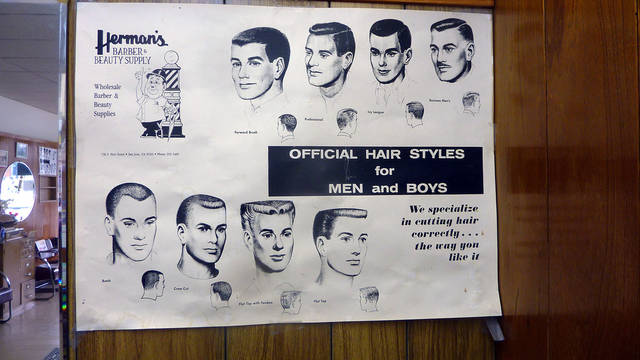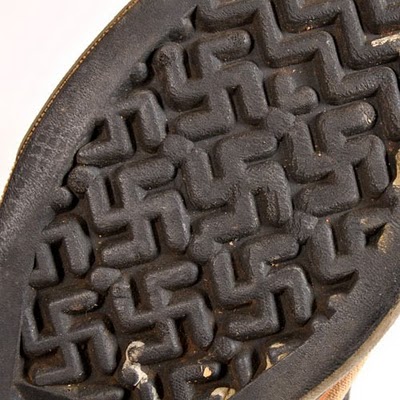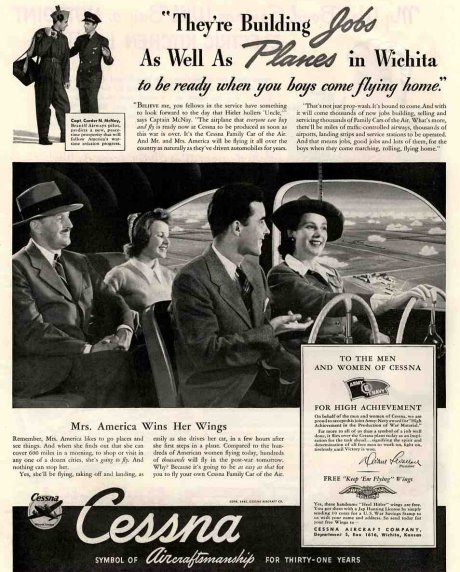Cory Doctorow took this snapshot of a vintage poster in the window of Simpson’s Family Barbershop in Menlo Park, CA. The poster makes explicit what is usually left unsaid. We don’t usually pick our hairstyles according to whim. Instead, we are supposed to choose from a set of normative hairstyles (ones that are socially approved), unless we are willing to face the social police.
Found on BoingBoing thanks to Lauren McGuire.
—————————
Lisa Wade is a professor of sociology at Occidental College. You can follow her on Twitter and Facebook.










